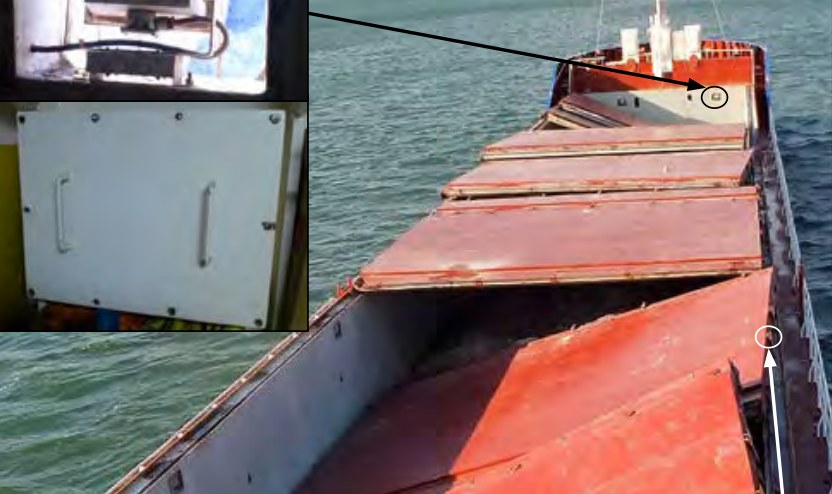In the latest Safety Digest, UK MAIB focuses on an explosion accident, according to which the master of a cargo vessel received unambiguous loading instructions that led to two explosions in the forecastle store. After the incident, the crewmember that was in the room with the explosions suffered severe burns, whereas the investigation showed that hydrogen had been released from the cargo and seeped into the forecastle store through a cargo lamp access plate.
The Incident
The loading instructions received by the master of a cargo vessel were unambiguous ‘proceed to port for a full load of incinerator bottom ash (IBA). This is a non-hazardous cargo. It can be loaded in rain.’
Although the ship master checked the schedule of authorised bulk cargoes in the International Maritime Solid Bulk Cargoes (IMSBC) Code, he found no entry for IBA. Following the assurance he received from the shipper in the loading instructions, he loaded about 2,300 tonnes of unprocessed IBA in heavy rain. The vessel departed the berth in the evening hours and the master decided to anchor outside the port, waiting for bad weather to pass.
The next day, the chief engineer went into the forecastle store to test the emergency fire pump. He ran it for 5 minutes, and when he switched it off there were two loud explosions in rapid succession. The explosion resulted to the chief engineer being blown off his feet, and the waterproof coat he was wearing was melted onto his skin and he suffered severe burns to his head and body.

He staggered out of the store and a crew member assisted him to the mess room. He was subsequently evacuated to hospital by a rescue helicopter. The chief engineer had suffered first degree burns to his face and second degree burns to his body, both hands and lower extremities. His recovery took several months.
The explosions had lifted all of the vessel’s heavy steel hatch covers, breaking their holding down cleats. Many of the hatch covers had also been distorted and some had fallen into the cargo hold and were resting on top of the cargo. The cargo hold coamings had also been distorted; the vessel was out of service for 4 months for repair
The investigation that followed the incident revealed that hydrogen gas had been released from the cargo and had seeped into the forecastle store through a cargo lamp access plate.
At some point the access plate had been loosely refitted with two bolts and no sealing gasket. Hydrogen gas, which forms an explosive mixture with air from 5% to 74% concentration, ignited when the emergency fire pump was switched off – probably because of some arcing between the electrical contractors in the starter box.
Lessons Learned
- It is illegal to load a cargo that has not been included in the schedule of authorised cargoes in the IMSBC Code.
- If you are asked to load a cargo that has not been included in the Code, alert the competent authorities in the port and refuse to load it. Always ensure that the gas tight integrity of cargo holds is maintained.































































